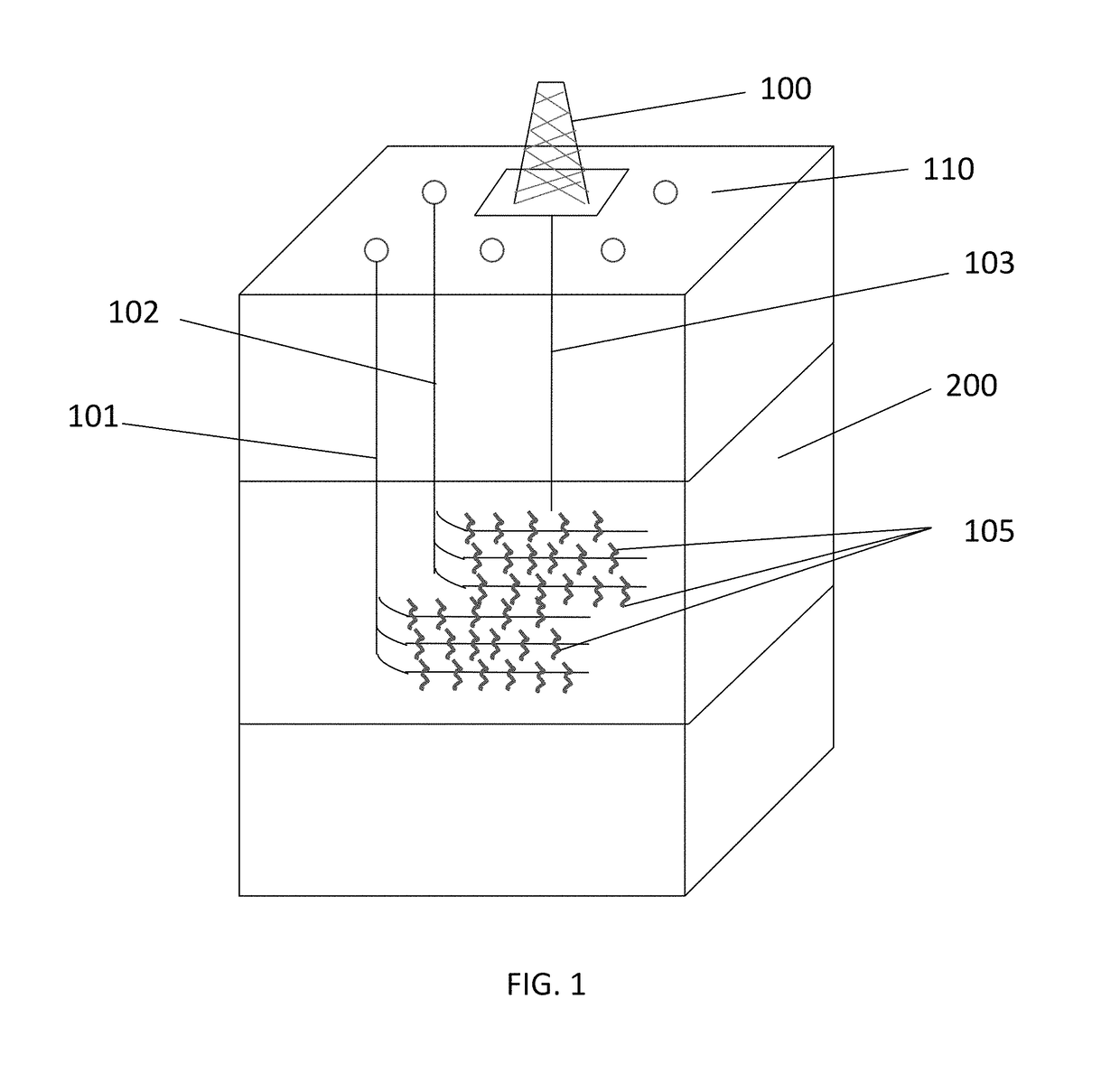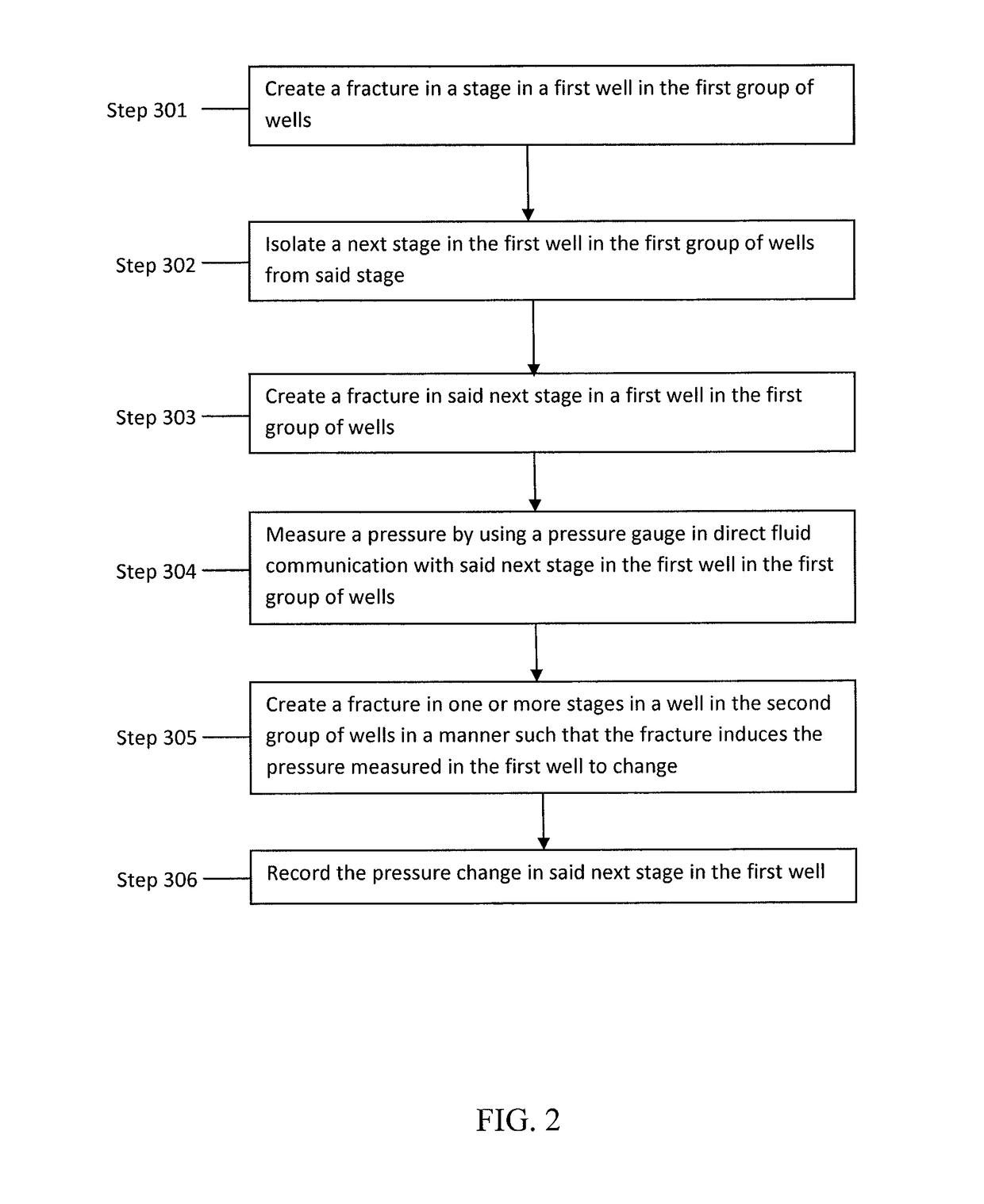Method of acquiring information of hydraulic fracture geometry for evaluating and optimizing well spacing for multi-well pad
a fracture geometry and multi-well technology, applied in the field of reserve technology, can solve the problems of significant reducing the value of resources, affecting the efficiency of drilling, and economic marginality, and achieve the effect of reducing costs and increasing the certainty of results
- Summary
- Abstract
- Description
- Claims
- Application Information
AI Technical Summary
Benefits of technology
Problems solved by technology
Method used
Image
Examples
Embodiment Construction
[0016]The present invention will now be described in detail with reference to the accompanying drawings, wherein the same reference numerals will be used to identify the same or similar elements throughout the several views. It should be noted that the drawings should be viewed in the direction of orientation of the reference numerals.
[0017]The present invention is directed to design the stage sequencing of a multi-well hydraulic fracturing job and design a pressure measurement technique during stimulation to acquire data that can be interpreted and analyzed for evaluating hydraulic fracture geometry, connectivity, and proximity and optimizing well spacing.
[0018]FIG. 1 shows an exemplary diagram of a drilling operation on a multi-well pad. One of ordinary skill in the art will appreciate that the drilling operation shown in FIG. 1 is provided for exemplary purposes only, and accordingly should not be construed as limiting the scope of the present invention. For example, the number o...
PUM
 Login to View More
Login to View More Abstract
Description
Claims
Application Information
 Login to View More
Login to View More - R&D
- Intellectual Property
- Life Sciences
- Materials
- Tech Scout
- Unparalleled Data Quality
- Higher Quality Content
- 60% Fewer Hallucinations
Browse by: Latest US Patents, China's latest patents, Technical Efficacy Thesaurus, Application Domain, Technology Topic, Popular Technical Reports.
© 2025 PatSnap. All rights reserved.Legal|Privacy policy|Modern Slavery Act Transparency Statement|Sitemap|About US| Contact US: help@patsnap.com



